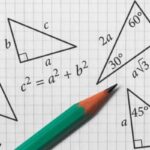We explain what measurement is, how it is carried out, its instruments, types and units. Also, what mistakes can be made.

What is measurement?
Measurement is the process through which compares the measurement of one object or element with the measurement of another. For this, different numerical values or dimensions must be assigned using different tools and procedures.
To measure, a chosen pattern is compared with another object or phenomenon that has a physical magnitude equal to it in order to calculate how many times the pattern is contained in that particular magnitude. However, this action that seems so simple to calculate becomes difficult when what you want to measure and express numerically is intangible or even evanescent.
See also: Measure
What should the measurement process be like?
The measurement process seeks to distinguish objects, phenomena or cases to classify them. This process responds to certain requirements and principles:
- It must be valid. There must be ways to demonstrate how the measurement is made.
- It must be reliable. The measurement must be applied in several cases and must always provide the same – or similar – results.
- It must be precise. It must have minimal errors; for this, sensitive and faithful measuring tools and instruments must be used.
How to measure accurately?
There are certain provisions to improve the results of a measurement:
- Use the right tools for the type of measurement and ensure that they are in good condition.
- Reduce errors that may occur when manipulating the measuring instrument, as well as systematic errors.
- Repeat as many times as possible measurement possible and average the results obtained.
- Reduce all causes of the external environment that may affect the measurement.
Measurement types
- Direct measurement. A measuring instrument is used that compares the variable to be measured with a certain standard. In this type of measurement, two objects that have the same characteristic are compared. For example: the length of an object is calculated by comparing it with the length established on a caliper; The frequency of an object is measured with the frequency of a stroboscope.
- Indirect measurement. The desired measurement is obtained by calculating one or more different magnitudes that were obtained by direct measurement. This is because measurements between variables cannot always be calculated directly, either due to their size, nature or other factors. For example: knowing the acceleration of gravity.
- Reproducible measurement. The same result is always obtained if comparisons are made between the same variable and the measuring device used. For example: if the same side of a bed is measured several times, the results will always be the same.
Measuring instruments

Measuring instruments are the tools used to take the measurement of an object or element. There are various types of instruments that are classified according to what they measure:
- Instruments for measuring time. Clock, stopwatch, timer.
- Instruments for measuring weight. Scale, scale, dynamometer, barometer.
- Instruments for measuring length. Ruler, tape measure, distance meter, caliper.
- Instruments for measuring temperature. Thermometer, pyrometer, thermohygrograph.
- Instruments for measuring electric current. Ammeter, multimeter, galvanometer.
Units of measurement
Units of measurement They are standard quantities that are used as a standard to know the measurement of objects and elements.. The number obtained in any measurement is the result of the comparison of the object or element and the established unit of measurement.
The International System of Units recognizes seven basic units of measurement: kilogram, meter, ampere, kelvin, second, candela and mole. These units are used in most countries of the world and represent respectively: weight, length, intensity of electric current, temperature, time, luminous intensity and amount of substance.
Measurement error
The results obtained in a measurement are not always exact, since different types of errors can occur:
- Systematic errors. The same occurs every time a certain measurement is made due to a failure in the measuring instrument or an error in the method used. They are errors that are attributed to a physical law so their causes can be determined and corrected.
- Random errors. They occur inevitably and are caused by changes in the physical environment in which the measurement is carried out or failures in the operator. They are errors that are not attributed to a physical law, so they cannot be eliminated.
Measurement in chemistry
Chemistry is the science that studies the composition and structure of matter. Matter has certain measurable characteristics such as weight, mass and temperature, and there are various instruments that are used to make measurements on these properties. Among the most representative are:
- Balance. Object used to measure the mass of two objects.
- Thermometer. Instrument used to measure the temperature of a substance.
- Test tube. Graduated cylinder used to measure volumes.
- Pipette. Graduated instrument used to measure volumes of liquids.
- Beaker. Cylindrical container used in chemical laboratories and measures the volume of a liquid.
- Refractometer. Instrument used to measure the density of a substance.
- Calorimeter. Instrument used to measure the temperature of a substance or body.
- Erlenmeyer flask. Glass instrument used in the chemical laboratory to measure the volume of a substance.
Measurement in statistics
Statistics is the science that collects and analyzes data that are compared to each other based on a series of measurement scales that serve as a reference. There are four types of measurement scales that vary according to the characteristics of the data to be compared.
- Nominal scale. Qualitative measurement scale that classifies variables into groups or categories and identifies them with a name, symbol or number chosen by the researcher.
- Ordinal scale. Measurement scale that classifies variables into groups or categories and identifies them with a name, symbol or number that ranks them.
- Interval scale. Numerical measurement scale that measures the real and numerical difference between two variables. In this type of scales, 0 does not mean the absence of value, but rather it is arbitrarily arranged somewhere on the scale. For example: temperature.
- Ratio scale. Numerical measurement scale that measures the real and numerical difference between two variables. In this type of scales, 0 represents the absence of measurement. For example: weight.
Continue with: Graphic scale
References
- “Measurement” on Wikipedia.
- “Measurement” in Encyclopedia Britannica.
- “Measurement scales” at the University of Valencia.
- “Variable measurement level” in IBM.





